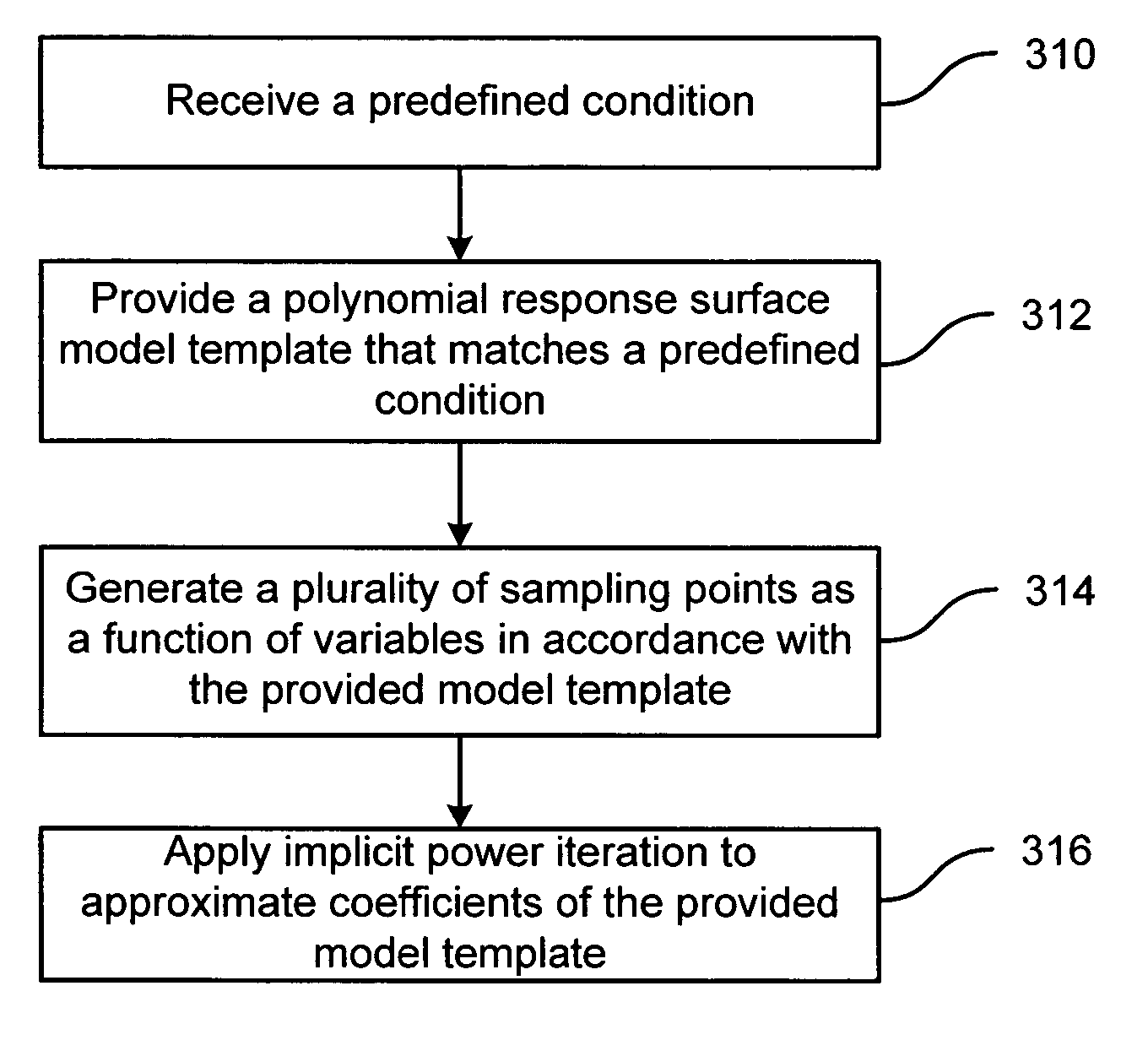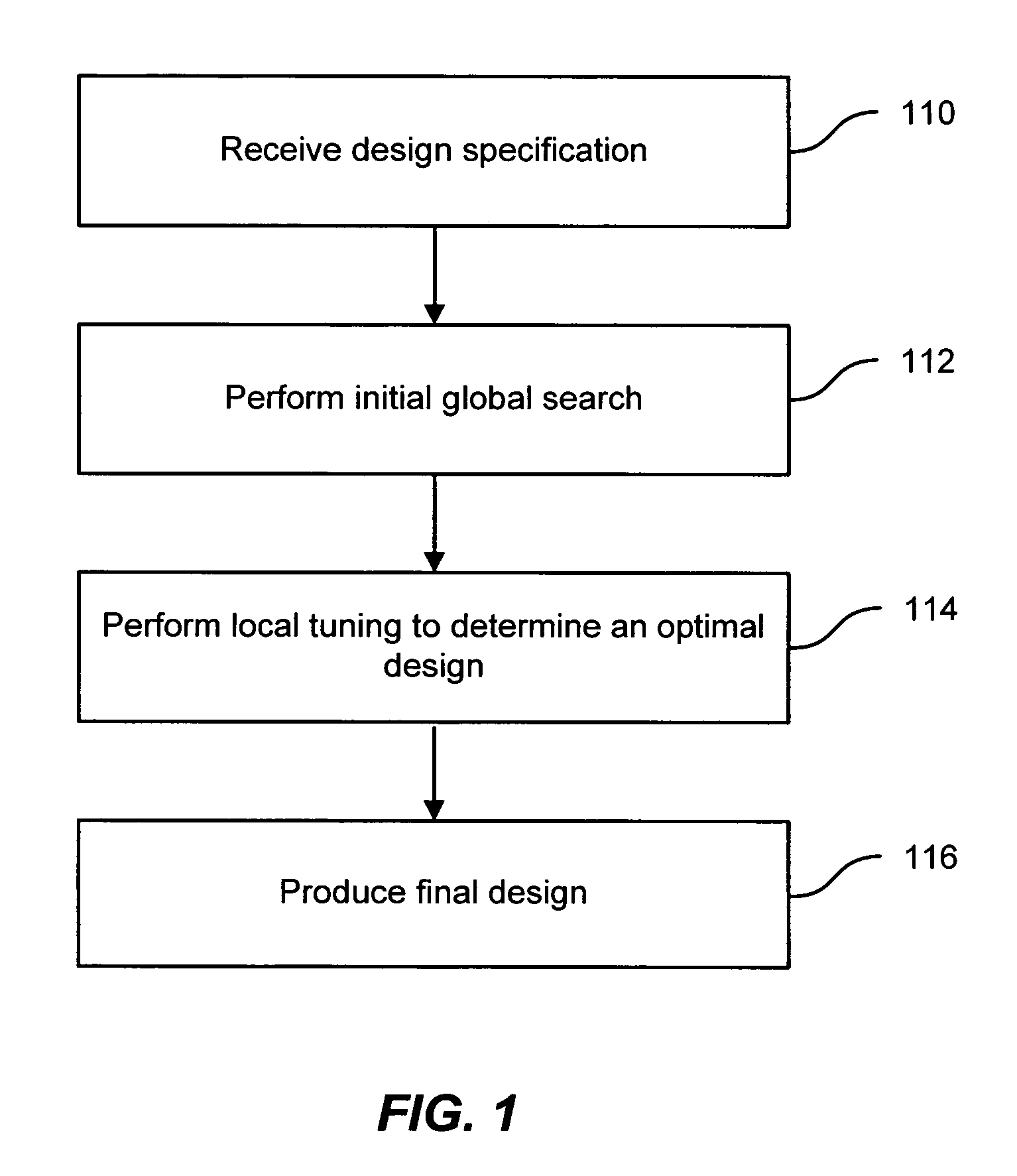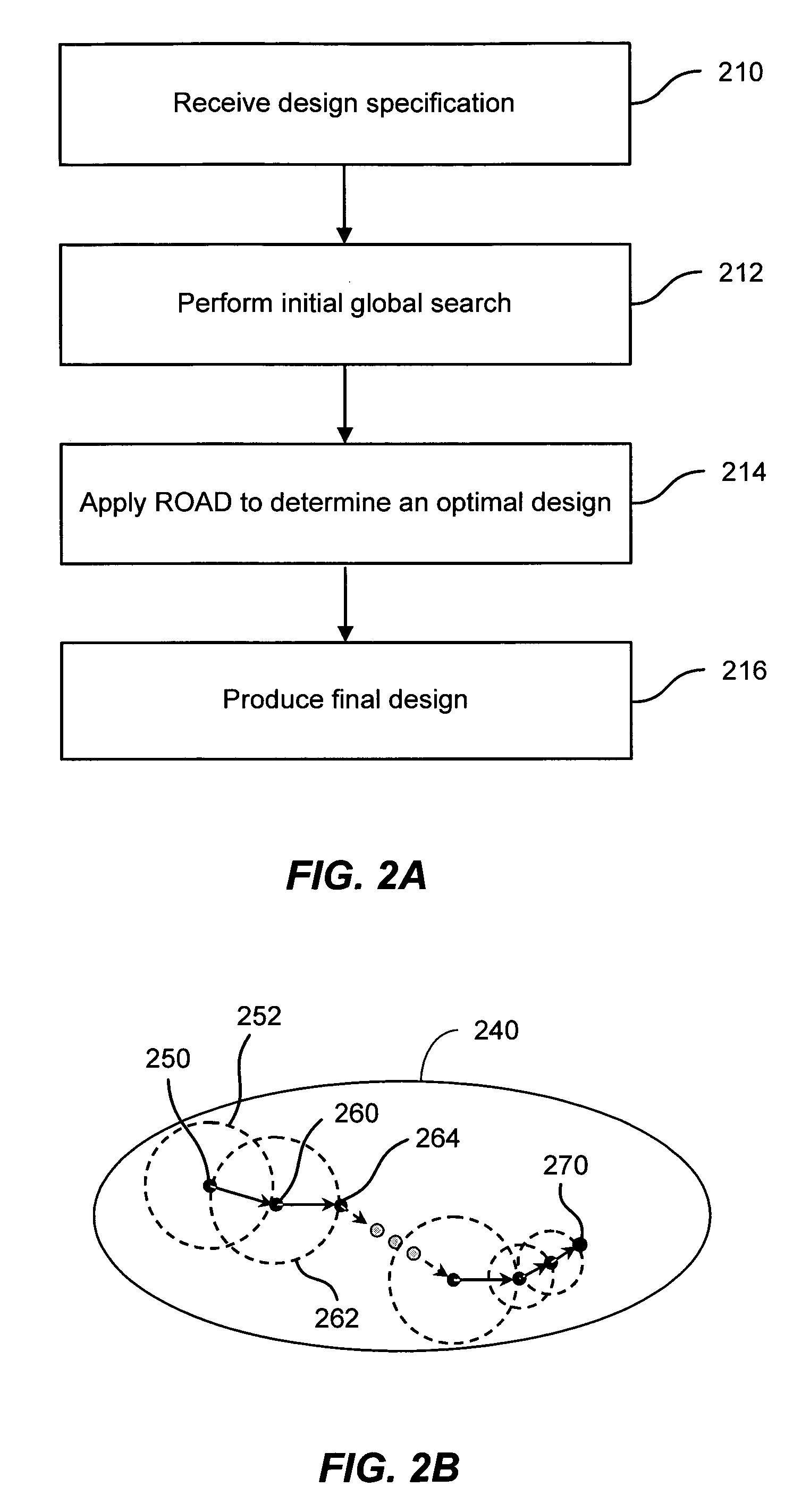Statistical optimization and design method for analog and digital circuits
a technology of statistic optimization and design method, applied in stochastic cad, cad techniques, instruments, etc., can solve the problems of increasing the difficulty of understanding the design, affecting the performance of analog/rf circuits, and complicated analog/rf circuit design, etc., to achieve high accuracy response surface, reduce computational costs, and improve computational efficiency
- Summary
- Abstract
- Description
- Claims
- Application Information
AI Technical Summary
Benefits of technology
Problems solved by technology
Method used
Image
Examples
Embodiment Construction
[0030]According to the present invention techniques related to integrated circuit modeling and optimization are provided. More specifically, the present invention relates to the design of analog / RF and digital circuits based on device level simulation models incorporating process and environmental variations. Merely by way of example, the invention has been applied to statistical analysis and optimization of analog / RF and digital circuits. The methods and techniques can be applied to other applications as well such as MEMS design, radiation hardened circuit design, statistical process control, and the like.
[0031]Embodiments of the present invention provide analog / RF design tools that incorporate the impact of process and environmental variations. As device dimensions decrease, for example with sub-100 nm technologies, consideration of the process and environmental variations becomes a critical design concern. Using conventional design techniques lacking the inclusion of process and ...
PUM
 Login to View More
Login to View More Abstract
Description
Claims
Application Information
 Login to View More
Login to View More - R&D
- Intellectual Property
- Life Sciences
- Materials
- Tech Scout
- Unparalleled Data Quality
- Higher Quality Content
- 60% Fewer Hallucinations
Browse by: Latest US Patents, China's latest patents, Technical Efficacy Thesaurus, Application Domain, Technology Topic, Popular Technical Reports.
© 2025 PatSnap. All rights reserved.Legal|Privacy policy|Modern Slavery Act Transparency Statement|Sitemap|About US| Contact US: help@patsnap.com



